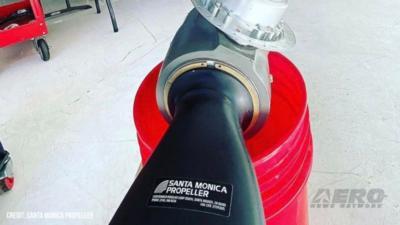Sun, Apr 21, 2024
NTSB Issues Safety Alert on Aluminum Prop Blades
Aviation authorities have recently emphasized the critical importance of regular and thorough inspections of aluminum propeller blades, especially for aircraft frequently operating in harsh environments such as backcountry, aerial application, and coastal areas.

These guidelines aim to enhance the safety and airworthiness of the fleet by preventing propeller blade failures that could result in severe accidents.
The recommended practices focus on meticulous inspections at various stages of a propeller's operational lifecycle. Maintenance personnel are advised to follow a systematic approach by adhering to the maintenance manual and employing detailed checklists. This includes inspecting every part of the propeller, especially the leading edges and back sides of the blades, which are prone to damage. Sections of larger propellers should be marked off to ensure no area is overlooked.
Utilizing optimal lighting conditions and magnification tools is crucial for identifying any potential damage, especially those that might be concealed by cosmetic painting. This attention to detail helps in detecting underlying issues that could compromise the propeller's integrity and functionality.

Moreover, post-maintenance checks are highly recommended, involving a secondary review by another qualified individual, which could be another mechanic or a pilot, depending on the type of repair. This practice is aimed at ensuring that all maintenance work meets the necessary safety standards.
For aircraft not governed by standard overhaul timelines, such as public aircraft and certain parts of private operations, it is advised to maintain propellers strictly according to the manufacturer’s guidelines. This includes adhering to recommended overhaul schedules and keeping detailed records of all inspections and repairs in the propeller logbook.
The FAA's Advisory Circular AC 20-37E on Aircraft Propeller Maintenance and other service documents provide comprehensive guidance on maintaining propeller blades. These documents are vital for keeping maintenance personnel updated on best practices and new technological advancements in propeller maintenance.
As aircraft operations continue to evolve, the emphasis remains on ensuring that all components, particularly propellers, are maintained to the highest safety standards. This proactive approach in regular maintenance and inspection is essential for the safety of the aviation industry.
More News
“These new aircraft strengthen our ability to respond quickly, train effectively and support communities nationwide. Textron Aviation has been a steadfast supporter in helpin>[...]
From 2011 (YouTube Edition): Rugged, Legendary, STOL Twin Makes A Comeback The de Havilland Twin Otter is an airplane with a long history, and it gained a reputation as a workhorse>[...]
A Wind Gust Lifted The Right Wing And The Airplane Turned To The Left Analysis: The pilot was departing from a 2,395-ft-long by 50-ft-wide turf runway. The pilot reported that afte>[...]
Have A Story That NEEDS To Be Featured On Aero-News? Here’s How To Submit A Story To Our Team Some of the greatest new stories ANN has ever covered have been submitted by our>[...]
Braking Action Advisories When tower controllers receive runway braking action reports which include the terms “medium," “poor," or “nil," or whenever weather con>[...]
 Aero-News: Quote of the Day (12.18.25)
Aero-News: Quote of the Day (12.18.25) Classic Aero-TV: Viking Twin Otter 400--Bringing the DHC-6 Back Into Production
Classic Aero-TV: Viking Twin Otter 400--Bringing the DHC-6 Back Into Production NTSB Final Report: Rans Employee Flying Club Rans S-6ES Coyote II
NTSB Final Report: Rans Employee Flying Club Rans S-6ES Coyote II ANN FAQ: Submit a News Story!
ANN FAQ: Submit a News Story! ANN's Daily Aero-Term (12.18.25): Braking Action Advisories
ANN's Daily Aero-Term (12.18.25): Braking Action Advisories




